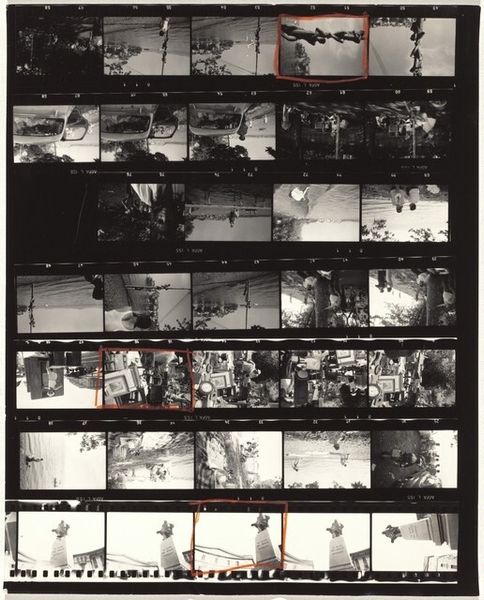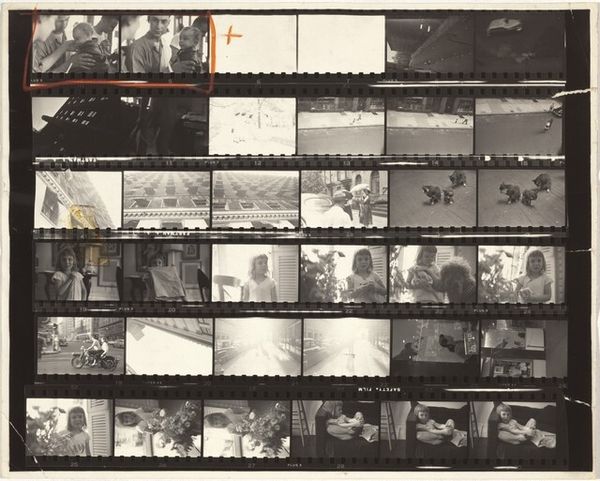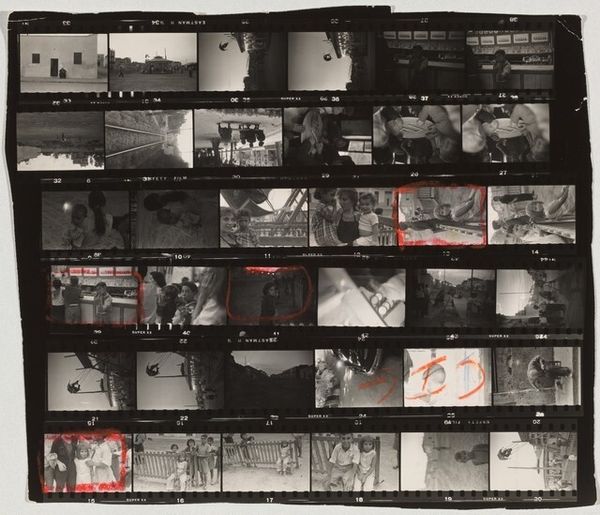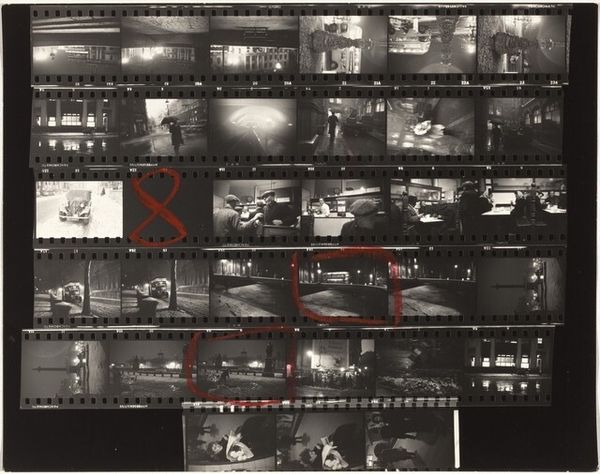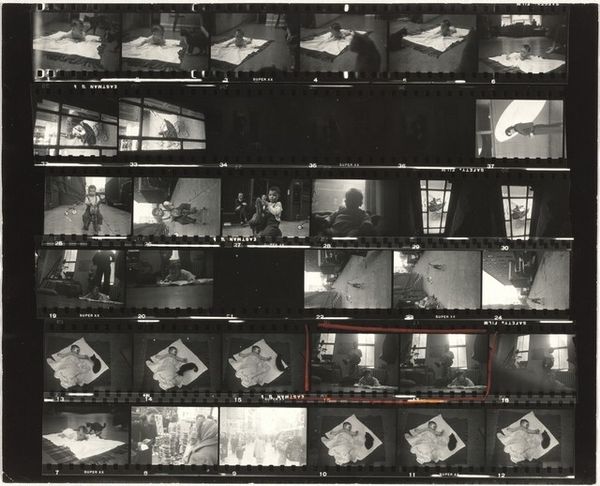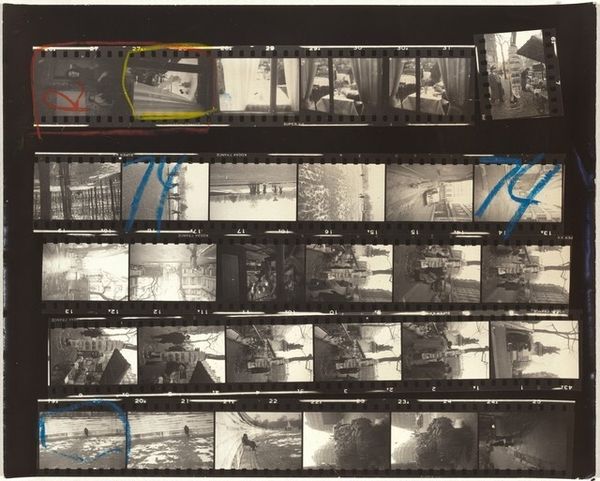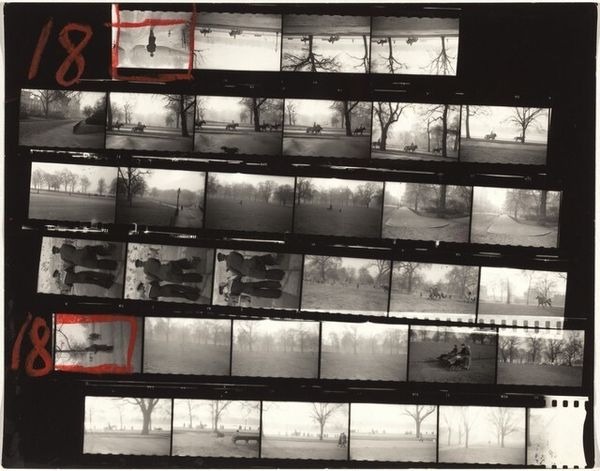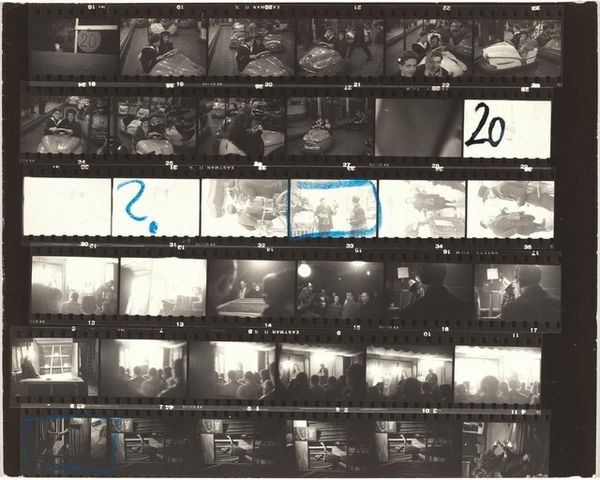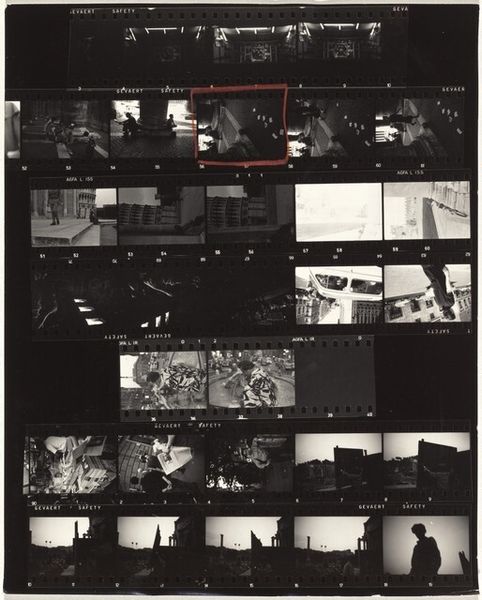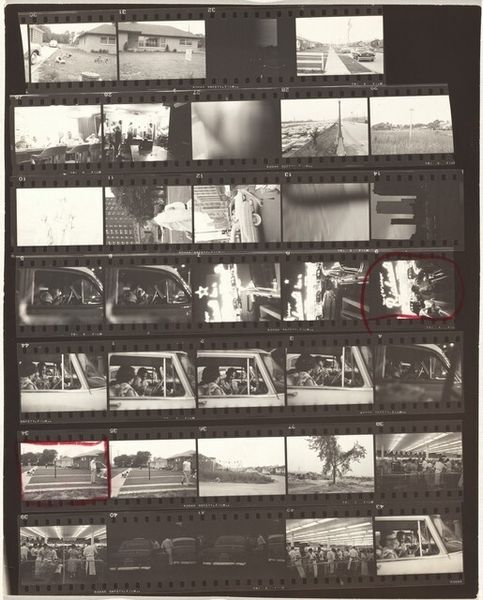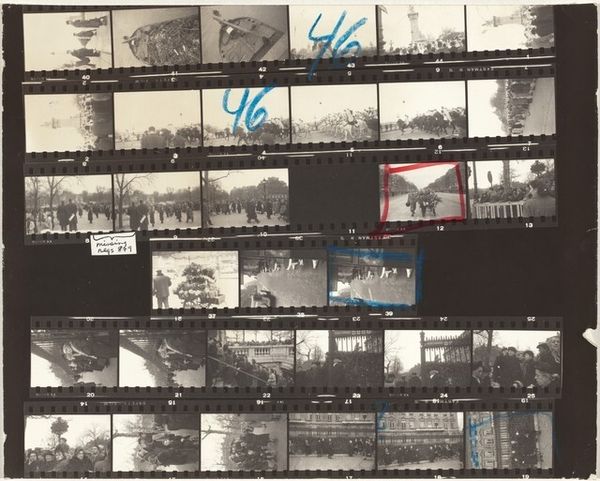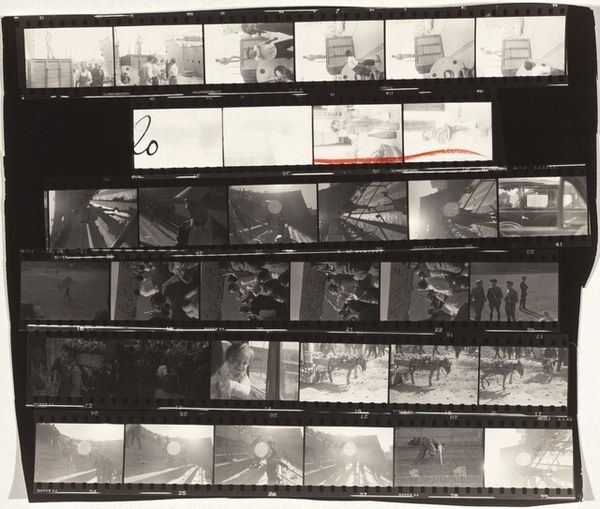
Dimensions: overall: 20.2 x 25.2 cm (7 15/16 x 9 15/16 in.)
Copyright: National Gallery of Art: CC0 1.0
Curator: Here we have Robert Frank’s contact sheet, "Paris 10B," created between 1951 and 1952, presented as a gelatin silver print. The grid of images provides a captivating, fragmented glimpse into Parisian life during that period. Editor: My immediate impression is one of organized chaos. It's a collage of stolen moments, candid street scenes, a sort of photographic poem to a city brimming with contradictions. The light and shadows are striking too. Curator: Frank was deeply interested in capturing everyday life, documenting what he saw as an outsider. This sheet provides not only the final images that Frank approved but also the outtakes, all sharing equal space in a way that disrupts established power structures. It’s documentary and yet deeply personal. The camera democratizes. Editor: The contact sheet format reveals the artist's thought process. We can see the recurrence of specific themes or motifs – notice, for instance, the images around light or shadow on surfaces—almost like he’s parsing a personal vocabulary. What meanings are suggested by the carousels or outdoor public advertisements? Curator: The images around those lights are crucial. The mid-20th century in France involved enormous cultural upheaval from reconstruction to changing urban demographics. This artwork reveals the experiences of marginalized groups in society who often are excluded from a city's glow, literally and metaphorically. This also speaks to photojournalism practices, revealing labor as a cultural value that often goes unrecognized. Editor: There's a visual rhythm, almost musical, in the repetition and variation. Faces turn towards or away from the camera. And that title written right on the surface – this emphasizes the document as object in its own right. In film history, what does it mean to offer everything that may be offered as potential “truth?" Curator: That's it. We are all implicated and everything exists together. Thanks to this assemblage of images, there is truth and a construction of truth coexisting in an aesthetic that democratizes knowledge. Editor: Absolutely. Seeing this collection allows us, the viewer, to create new meanings between fragments of cultural information. We build on it for our current moment.
Comments
No comments
Be the first to comment and join the conversation on the ultimate creative platform.
